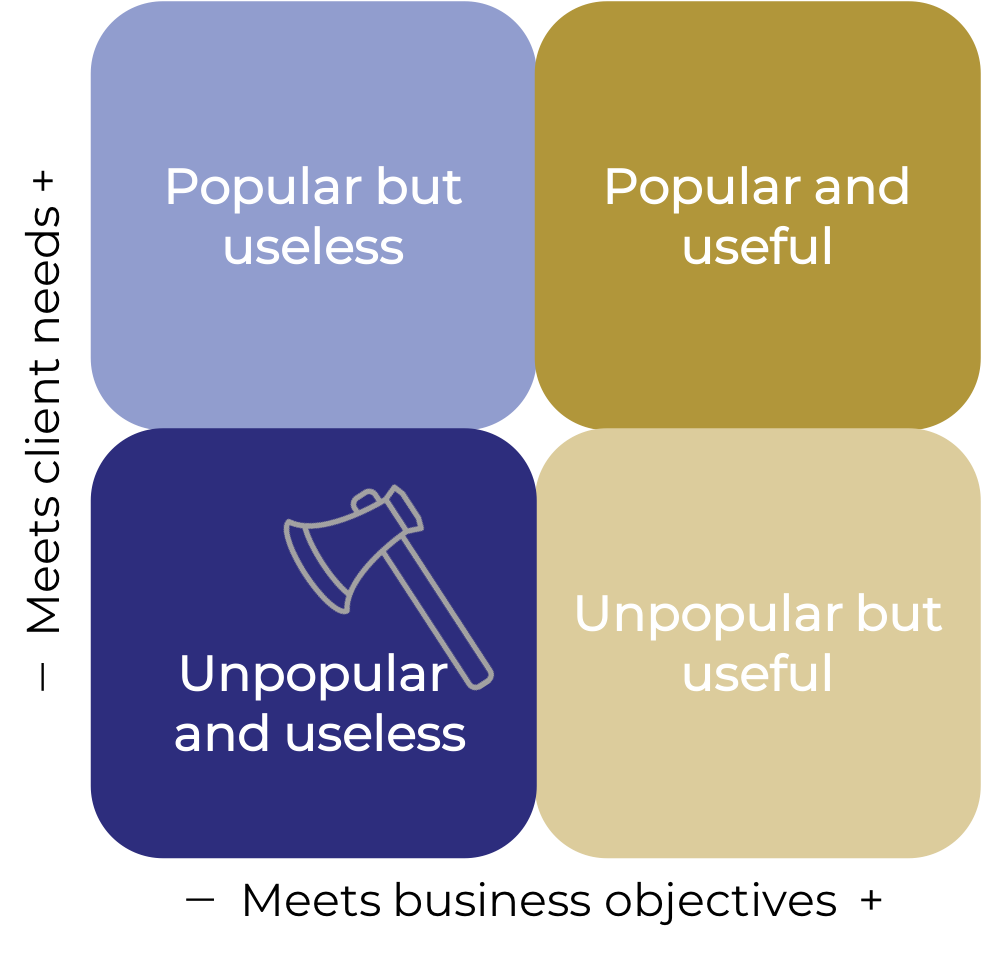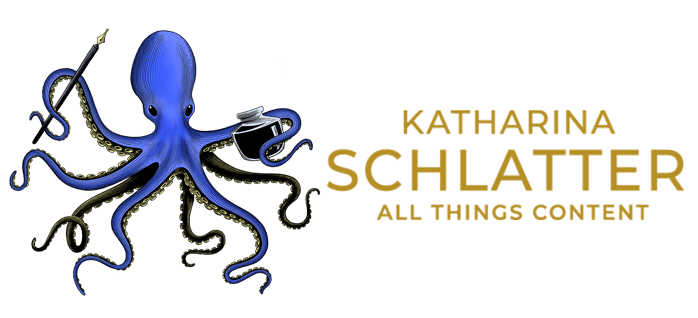Keine Angst vor Sparübungen
When the going gets tough, cost cuts are always on the table. There is no way around having a sound strategy, if you need to reduce your budget.

No fear of cost cutting
When the going gets tough, cost cuts are always on the table. There are a few easy ways to reduce cost in content production. However, there is no way around having a sound strategy, if you need to reduce your budget.
Reading time: 5 minutes
It doesn’t matter whether the global economy will slide into a recession “only” or into a depression of a lifetime. Budget cuts will be on the table in every business in the coming months.
High quality content is vital for all corporate activities nowadays. Thus, the cost for creating this content is quite high. I like telling the old advertising joke that 50% of advertising money is wasted, the problem is finding out which 50%. The same could be said about content.
Where do you wield the axe so that there is only minimal pain? The general rule to go by is “less is more.” Read the following short list of cost cutting measures ranked by difficulty.
How often is too often?
Many content projects are periodical as this is convenient for planning and production. Often their frequency has been set arbitrarily. Do your clients really need weekly updates from your company? Probably not. Extending your publishing cycle could also improve the overall quality of your content as an added bonus.
It is a well-known fact that out of 100 ideas, only one is great, two or three are good, a few more are ok, and the rest is trash. Proof of this is the fate of German comedy show TV total. The show, which made host Stefan Raab famous, initially aired weekly and became cult almost instantly. Then the schedule was changed to four times a week and the show went downhill from there.
How long is too long?
Client magazines, newsletters, blogs, social media posts mushroom during good times. The “less is more” principle applies to volume and length as well – in particular for newsletters and magazines.
There is no ideal page count for client magazines. If you compare the Best of Corporate Publishing shortlist for 2019, you see a broad range. The magazine RED (SIX Group) has seven articles on 36 pages; Breaking the rules (Roland Berger) 17 articles on 82 pages. Obviously, numbers alone don’t determine quality. (Best of Corporate Publishing, German)
Opinions differ as to how long an online article should be. The ideal length of a blog article seems to be between 1’000 and 2’000 words if it needs to achieve a favorable search engine ranking. However, this range varies wildly depending on the sector. (Torque Magazine)
Word counts are not everything, the quality of a text is even more important. Long texts are ok, but they need to deliver. They need to offer relevant and useful information – and they need to be entertaining. If quality is low, readers might prefer a short information that is easy to grasp.
Creating short information is easier said than done. It may sound counter-intuitive but it is more difficult to communicate something in a short text than in a long one. So creating shorter content does not necessarily lower cost. Those savings are only realized in later production steps such as editing, translation, layout etc.

Photo: Ron Dyar, Unsplash
Expensive language versions
The beginning of a new publication project is often marked by high hopes and euphoria. You think global and include potential clients in different language regions from the outset.
This is not wrong. It is a fact that people want to consume content in their own language, even if they speak a foreign language well. It is also a fact that language versions are used when offered. If you cut a language version, you will lose this part of your audience. There is no easy solution here. You need to decide whether the cost savings justify the loss of a part of your audience.
It is not a good solution to switch to machine translations. It is true that high-quality translations are expensive, but machine translations are still not good enough for anything that you send to your clients. Never skimp on quality.
If you don’t want to disappoint a small group of your clients, maybe offer them a reduced option instead. For example, translate only the three main articles out of ten.
As an additional bonus, you may realize that those three articles are actually all you need for all language versions.
Is print still worth it?
Printed client magazines are still popular in content marketing – for good reasons. The advantages are tangible – literally. However, a professional layout, printing and distribution are expensive.
It could still be a mistake to publish online only despite the high cost of printing. Neurologist Hans-Georg Häusel explains in an article how the brain switches to a “strolling” mode when you read on paper, whereas it switches to a “targeting” mode when you read online (article in German).
Admittedly, the article is from 2016 and the publisher is not neutral. Still, attitudes toward a printed medium are more relaxed and positive in general. Don’t underestimate this effect, in particular if your target group grew up before the internet became popular.
Cutting printed media without angering your target group is tricky. One solution is to plan your content from a web-first perspective and only produce the content fit for “strolling” in print. In other words print “less and more exclusive.”

Icons: good-ware
The price of chaos
I’m always surprised how chaotic some publishing projects are. There are revisions upon revisions of “final” content that has already gone to layout and translation. Various stakeholders want to review content at a late stage and cannot leave it untouched as a rule. Planning is so sketchy that the focus shifts constantly.
It is equally surprising that the teams in charge are not aware how chaotic processes drive costs. External providers charge by the hour. They know why.
A simple and robust process where each production step is taken only once will save you a lot of money.
It is worthwhile to spend the most time with planning. This phase includes a precise definition of content, target group, objectives and message, responsibilities and technical specifications such as length and deadlines. And all stakeholders need to follow the plan diligently.
A perfect process has five steps: Creation, revision, layout, proofing, and publishing.
Of course, it is never as simple. Texts need to be signed-off by various instances. They’re too long, too short or not good enough. The general focus has changed over time. Still, a robust process limits chaos – and cost – to some degree.
Save cost strategically
All cost-cutting measures described above are easy to implement. The negative impact on your audience should be limited. However, there is a risk that the cost-cutting leads to a “less is less” rather than a “less is more.”
You have to spend money first, if you want to save money effectively. Cancelling your most expensive publication may seem the right thing to do from a budget perspective, but this publication might be the one that supports your business objectives best. On the other hand, you may not be allowed to touch your boss’ pet project for no good reason.
Before you wield the axe, ask yourself the following questions: What do you want your content to achieve? What client needs have to be met? How does your content fulfill these two objectives? Can you achieve those objectives in an easier and cheaper way?
As simple as those questions seem, finding the answers requires time and money. To find out your clients’ needs is particularly hard. And it is advisable to involve client insight professionals for this task.
All this will give you a clear idea where to save costs.
Modified BCG matrix
Analyzing whether your content meets business objectives and client needs shows where you should cut cost.

Quelle: Freepik, All Things Content
